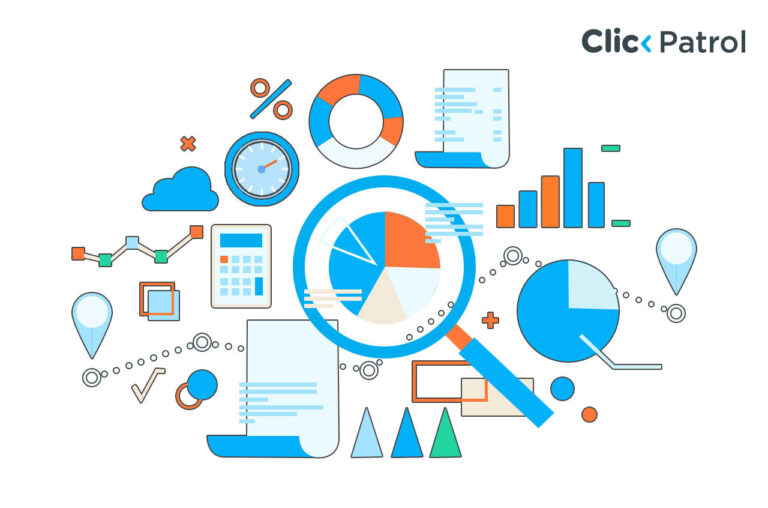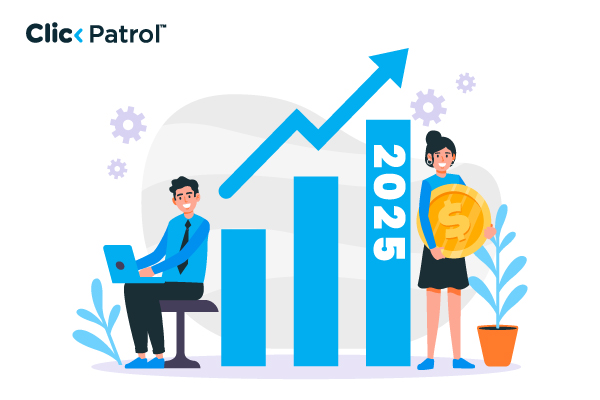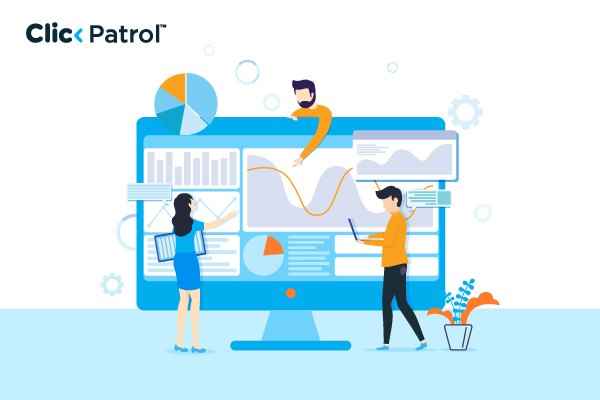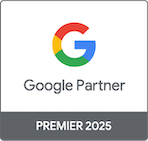
How to make money with PPC advertising in 2025: Expert tactics to maximize ROI
Abisola Tanzako | Aug 18, 2025

Table of Contents
PPC advertising is an effective way for businesses and individuals to attract targeted website visitors and earn money for each click on their ads.
With more people searching for products or services online than ever, PPC is a quick solution to reach new audiences at a low cost.
According to Statista, search advertising spending, an essential part of PPC, was $185.35 billion in 2022 and is expected to cross $260 billion by 2028.
Likewise, Forbes points out that PPC advertising is popular because it is cost-efficient and produces immediate outcomes.
Businesses earn an average of 200% return on investment (ROI) from smartly set-up campaigns.
In this article, you’ll discover PPC monetization tactics for e-commerce, affiliate marketing, blogging, and service lead generation.
What is Pay-Per-Click (PPC) advertising?
PPC is a type of online advertising where advertisers pay whenever someone clicks on their ad.
In contrast to standard ads that charge for impressions, PPC helps you save, as you only pay if someone clicks on your ad.
The most widely used PPC platforms are Google Ads, Microsoft Advertising (Bing), Facebook, and Instagram.
Top ways to make money with PPC in 2025
To earn from PPC, you need clear goals and brilliant execution. Here are four proven ways:
1. Drive E-commerce sales with PPC: Use PPC ads to bring customers to product pages.
How to make it work:
- Smart keyword targeting: Use tools like Google Keyword Planner to find long-tail keywords (e.g., “affordable wireless earbuds”) that are cheaper and convert better.
- Landing page optimization: Your pages should load fast, look good on phones, and match your ad message. Over 75% of users shop from mobile devices.
- Strong ad copy: Highlight discounts, free shipping, and add direct CTAs like “Shop Now.”
- Example: A clothing store runs Google Shopping ads for “women’s winter coats,” linking to a fast-loading product page with reviews and a simple checkout.
2. Promote affiliate products via paid search: Affiliate marketers earn by sending traffic to product links and getting a cut of the sales.
How to make it work:
- Pick high-demand products: Gadgets, fitness gear, or beauty items perform well.
- Target the right audiences: Use tools like Facebook Ads to show ads to likely buyers.
- Track performance: Use tools like ClickMeter or Voluum to monitor clicks and ROI. Example: A campaign for “best VPN for streaming” earns $50 per sale. If the ad costs $1 per click and converts well, that is a solid profit margin.
3. Generate leads for service businesses: Businesses like law firms or HVAC services use PPC to attract local clients.
How to make it work:
- Use local SEO: Set up a Google Business Profile. Appear in local search and Google Maps results.
- Offer value: Promote free consultations or quotes. Make the sign-up form simple.
- Example: A plumbing company runs an ad for “emergency plumber near me,” linking to a form for a free quote. Each lead could be worth hundreds of services.
4. Monetize content with PPC: Bloggers can use PPC to bring in traffic and earn through AdSense, affiliate links, or sponsored
posts.
How to make it work:
- Write valuable content: In-depth articles (2,000–3,000 words) get more traffic and links.
- Smart ad placement: Place ads in high-visibility spots, like the top or within the content.
- Choose high-paying niches: Finance, tech, and insurance often pay more per click.
- Example: A post reviewing “budget smartphones 2025” earns from AdSense clicks and affiliate sales through Amazon.
Best PPC platforms in 2025 and how to choose
Choosing the best platform plays a big role in increasing your PPC earnings. This list shows the leading platforms in 2025, according to market analysis done by Statista and others.
Google Ads:
a.) Why use it: Controls about 89.74% of the search engine market. Perfect for e-commerce, lead generation, and affiliate
marketing.
b.) CPC range: On average, CPC ranges from $0.50 to $5; some industries may charge more than this; for example, the legal field has
c.) CPCs as high as $40.
d.) Best for: People looking for specific products or services and companies aiming for them through keywords.
Facebook Ads:
a.) Why use it: It offers advanced demographic targeting, and 86% of PPC marketers take advantage of this platform. It is perfect for boosting brand recognition and making sales through affiliate marketing.
b.) CPC range: Usually, Bing Ads costs range from $0.30 to $2, less than Google Ads.
c.) Best for: Campaigns that rely on social media and remarketing.
Microsoft advertising (Bing):
a.) Why use it: Bing accounts for 4% of total searches, and its CPCs are usually lower than those seen on Google Ads. It is good for
both local businesses and B2B (business-to-business) promotion.
b.) CPC range: $0.20–$3.
c.) Best for: Advertisers who want to spend less money and focus on older audiences.
Instagram Ads:
a.) Why use it: About 70% of PPC marketers find it valuable when promoting visually appealing products. According to Statista, 67% of people aged 18 to 24 go on Instagram to find local business details.
b.) CPC range: $0.50–$3.
c.) Best for: Targeting a younger audience, which is common for both e-commerce and affiliate marketing.
Optimizing your PPC campaigns for maximum profit
For PPC to bring in profits, you must optimize your ads. Here are methods that can help you achieve a better ROI:
1. Improve quality score: Google Ads gives every ad a quality score that reflects ad relevance, the quality of the landing page, and the likely rate of clicks. Forbes points out that enhancing quality score may decrease CPC by 50%.
2. Leverage AI and automation: With Google Smart Bidding, you can have AI set your bid prices to either bring in conversions or clicks. According to Statista, 37% of people involved in e-commerce marketing apply AI to customer service and reviewing data that can guide better use of PPC.
3. A/B Testing: Try changing the message in the ads, the images you use, and the CTA buttons to find what works best for your audience. If you change the CTA from “Buy Now” to “Shop Today,” you could expect a 10–20% rise in click-through rate.
4. Monitor and adjust budgets: Start with a small budget and increase it when you find some of your keywords and ads are successful. According to Forbes, advertisers can review and control their PPC campaigns based on their results.
5. Use negative keywords: Stop your ads from matching searches that don’t matter to you by using negative keywords. By doing so, your watch ads won’t show to people who do timeline searches for “cheap” watches.
Challenges and risks of PPC
PPC is a very profitable option, but it presents some challenges.
1. High costs in competitive industries: Keywords related to finance or law can have high CPCs, which require managers to be extra careful with their budgets.
2. Ad fatigue: People may ignore ads that appear too many times in one session. Update your ad graphics periodically to prevent the audience from getting bored.
3. Click fraud: Competitors or bots may click your ads, causing you to lose money. You can use products such as ClickPatrol to prevent invalid clicks.
Maximizing your PPC potential
In 2025, businesses and individuals can earn money using pay-per-click advertising.
Using advertising platforms like Google Ads, Facebook, and Microsoft Advertising, and depending on data-driven techniques for your campaigns, can bring you good ROI.
PPC allows you to sell products, advertise affiliate programs, or generate leads, which can be measured for results.
Work on small campaigns, test them thoroughly, and increase their scope as you improve your method.
As the global market for search ads is expected to reach more than $260 billion in 2028, now is the perfect opportunity to monetize PPC traffic.
FAQs
Q. 1 What are the potential earnings from using PPC?
Your earnings rely on the niche and the number of conversions. Most affiliate marketers earn a commission of $50–$500 per sale, while PPC brings in, on average, two times its investment.
Q. 2 Are CPCs higher or lower than average at the moment?
Google Ads costs between $0.50 and $5, while the CPC for Facebook Ads is $0.30–$2. Certain industries with high competition can reach costs of $40.
Q. 3 Which is better, SEO or PPC?
Regarding results, PPC offers them immediately, whereas SEO takes time to bring in traffic. Both strategies can benefit you more because 27% of web traffic comes from PPC.





